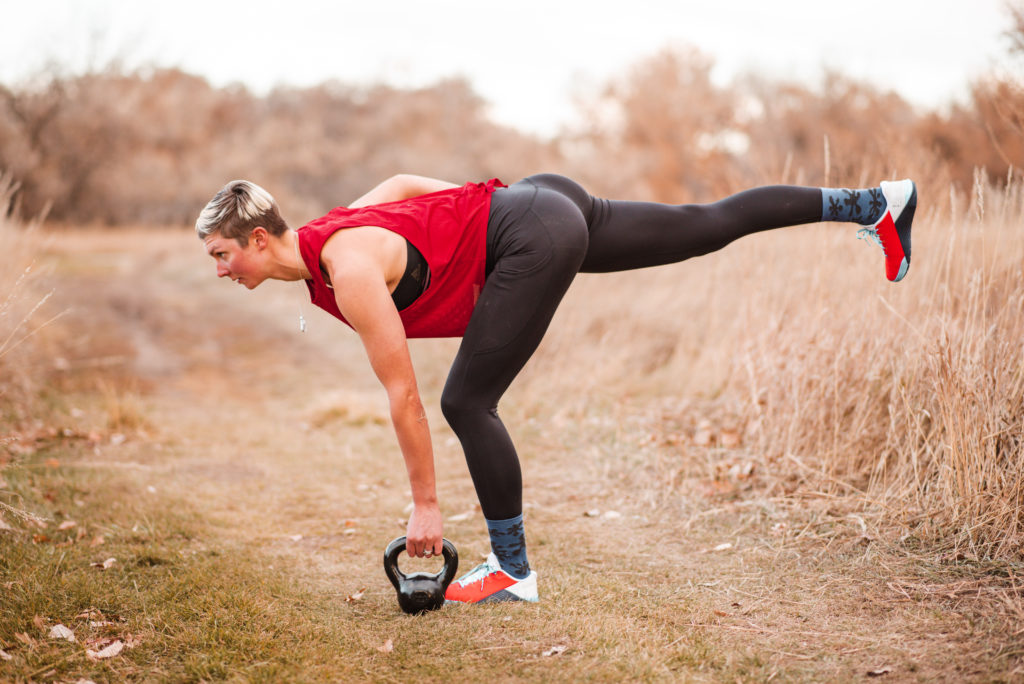Female Cyclists: Hormones and Performance

The Female Cyclists' Hormones and How it Affects Performance
In this blog, we're covering how female cyclists' hormones and the menstrual cycle affect their training, racing, and nutrition needs. If you have a question while reading, especially if it's about nutrition, schedule a FREE consultation with me and let's talk it through.
Now then, are there certain times of the month when you feel like you’re on fire? And then other times you feel like a load of bricks? Well, you are not alone! Most individuals who have female reproductive organs have a menstrual cycle. Therefore, the menstrual cycle impacts many aspects of our physical and mental health, and performance.

First things first, let us talk about the various phases of the menstrual cycle and what is happening to the body during each phase.
Female Cyclist Hormones: Phase 1
Day one of the menstrual cycle is the first day of menstruation or bleeding. Day 1 through day 7 make up part one of phase one and are known as the early Follicular Phase. This phase is characterized by low estrogen and progesterone levels and is known as the low hormone phase. Estrogen and progesterone are the two main hormones analyzed for their effects on performance and physiology.
A study published in 2020 in the Journal of Sports Medicine interviewed 140 athletes on how they perceive the menstrual cycle affecting their performance and fitness. A statistically significant amount of the participants expressed their best performance of the month came immediately after bleeding on days 5 to 7 (Solli et al 2020).
Studies show during this phase, athletes have better:
- Neuromuscular coordination
- Breathing rates
- Heat tolerance
In addition, there are also studies showing athletes have lower perceived exertion and easier access to glycogen (stored carbohydrates) (Oosthuyse 2010).
Female Cyclist Hormones: Phase 2, Late Follicular Phase
Late phase two, also known as the late Follicular Phase, is characterized by a rise in estrogen. The rise in estrogen leads to better access to glycogen (stored carbohydrates) compared to the early Follicular Phase and Luteal Phase.
Furthermore, other effects of high estrogen and low progesterone include:
- Better access to fatty acids (stored fat for energy) in the muscle
- A decrease in protein catabolism
- An increase in the ability to complete an aerobic exercise
- Better breathing rates
- A higher pain threshold (Oosthuyse 2010).
Athletes may also have heightened high aerobic capacity. Ex: Perform better at 3 to 10-minute efforts.
Female Cyclist Hormones: Phase 2, Luteal Phase
And last but not least is the Luteal Phase, phase 2, or high hormone phase. In this phase, both estrogen and progesterone are high. This phase is typically around days 20 to 24 of the cycle.
During the luteal phase, there is a significant increase in expression of a hormone called arginine vasopressin. This hormone causes:
- Water retention
- Labored cardiac output
- Higher breathing rates
- Decrease in heat tolerance
- Decrease in both the ability to get nutrients to muscles as well as clear out waste in the muscles.
In addition, there is an increase in the muscle’s ability to store glycogen but not access it, higher protein catabolism, and an increase in fatty acid oxidation.
Female Cyclist Hormones: What Does it All Mean
What does this all mean? Well, studies show that athletes may have decreased performance in short-duration type exercise in the luteal phase compared to the follicular phase.
However, with specific nutrition strategies, the impact of this phase on performance can be decreased to no negative effect at all (McNulty 2020). See below for guidance.
Every body is different. While we have research to start to explain the intricate physiological processes affected by the menstrual cycle, you as a female athlete have your own unique experiences related to how hormones affect your life and exercise.

Kristen’s Top Tips for Female Cyclists to Manage Your Menstrual Cycle:
- Track your cycle and consider tracking some or all these factors each day, which may be influenced: mood, exercise duration, and intensity, perceived exertion during exercise, cravings, food and drink, how heavy you are bleeding each day, daily energy levels, cramps or other adverse symptoms, sleep quantity and quality, heart rate variability, and body temperature.
- Track your menstrual cycle in Training Peaks so you and your coach can assess the relationship between your menstrual cycle and training and racing data together.
- Start to observe patterns related to each factor and where you are in your menstrual cycle. Don’t forget to write it down!
- Talk to your coach about your findings related to how the menstrual cycle affects your life and training/racing.
- Prioritize foods with anti-inflammatory properties around 7 days before you start menstruating and during menstruation: ginger, garlic, turmeric, sardines, salmon, kale, arugula, berries, sweet potatoes, quinoa, brown rice, steel-cut oats, avocadoes, almonds, chia seeds, and tart cherry juice.
- Consume 30-90g of carbohydrates and drink 16-32 ounces of fluid per hour during all activities over 90 minutes.
- Sip on a beverage with sodium and carbohydrates 30-60 minutes before all activities when you are 7 days out from menstruation and during menstruation.
- Perform light to moderate exercise to alleviate symptoms during menstruation.
- Consider working with a Registered Dietitian who specializes in sports nutrition and has experience working with athletes who have female reproductive organs to fine-tune your unique needs.
- Be kind to yourself and know that having a menstrual cycle is crucial to performance and a healthy body and mind.
- Don’t assume your experience will be the same as other athletes. Or that what you experience will be the same as what articles are telling you to feel/experience. Every athlete is unique and menstruation affects each athlete differently.
Final Thoughts on Female Cyclists and Performance
Watch my webinar below. In addition, if you'd like more tips about cycling as it relates to nutrition and performance, check out these other blog posts:
- Weight Loss for Cyclists
- Sports Nutrition for Female Cyclists: Considerations in a Field of Research on Males
- Male to Female, What's the Power Difference on the Bike?
Thanks for reading!
Kristen Arnold MS, RDN CSSD
USA Cycling Level 1 Coach, Sports Dietitian
karnold@source-e.net
